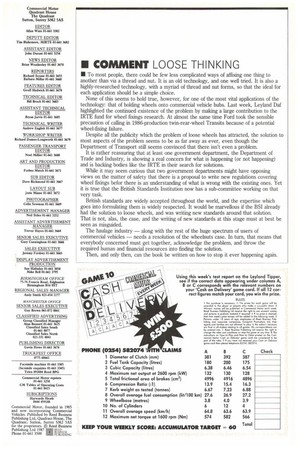• COMMENT LOOSE THINKING
Page 5

If you've noticed an error in this article please click here to report it so we can fix it.
• To most people, there could be few less complicated ways of affixing one thing to another than via a thread and nut. It is an old technology, and one well tried. It is also a highly-researched technology, with a myriad of thread and nut forms, so that the ideal for each application should be a simple choice.
None of this seems to hold true, however, for one of the most vital applications of the technology: that of holding wheels onto commercial vehicle hubs. Last week, Leyland Daf highlighted the continued existence of the problem by making a large contribution to the IRTE fund for wheel fixings research. At almost the same time Ford took the sensible precaution of calling in 1986-production twin-rear-wheel Transits because of a potential wheel-fixing failure.
Despite all the publicity which the problem of loose wheels has attracted, the solution to most aspects of the problem seems to be as far away as ever, even though the Department of Transport still seems convinced that there isn't even a problem.
It is rather reassuring that at least one government department, the Department of Trade and Industry, is showing a real concern for what is happening (or not happening) and is backing bodies like the IRTE in their search for solutions.
While it may seem curious that two government departments might have opposing views on the matter of safety that there is a proposal to write new regulations covering wheel fixings be for there is an understanding of what is wrong with the existing ones. Yet it is true that the British Standards Institution now has a sub-committee working on that very task.
British standards are widely accepted throughout the world, and the expertise which goes into formulating them is widely respected. It would be marvellous if the BSI already had the solution to loose wheels, and was writing new standards around that solution. That is not, alas, the case, and the writing of new standards at this stage must at best be seen as misguided.
The haulage industry — along with the rest of the huge spectrum of users of commercial vehicles — needs a resolution of the wheelnuts case. In turn, that means that everybody concerned must get together, acknowledge the problem, and throw the required human and financial resources into finding the solution.
Then, and only then, can the book be written on how to stop it ever happening again.




























































































